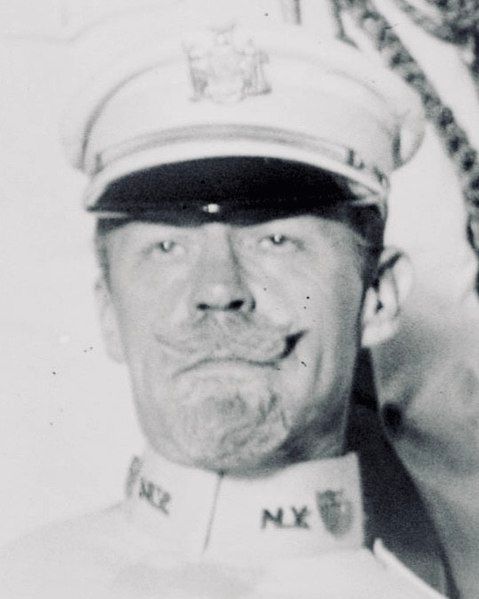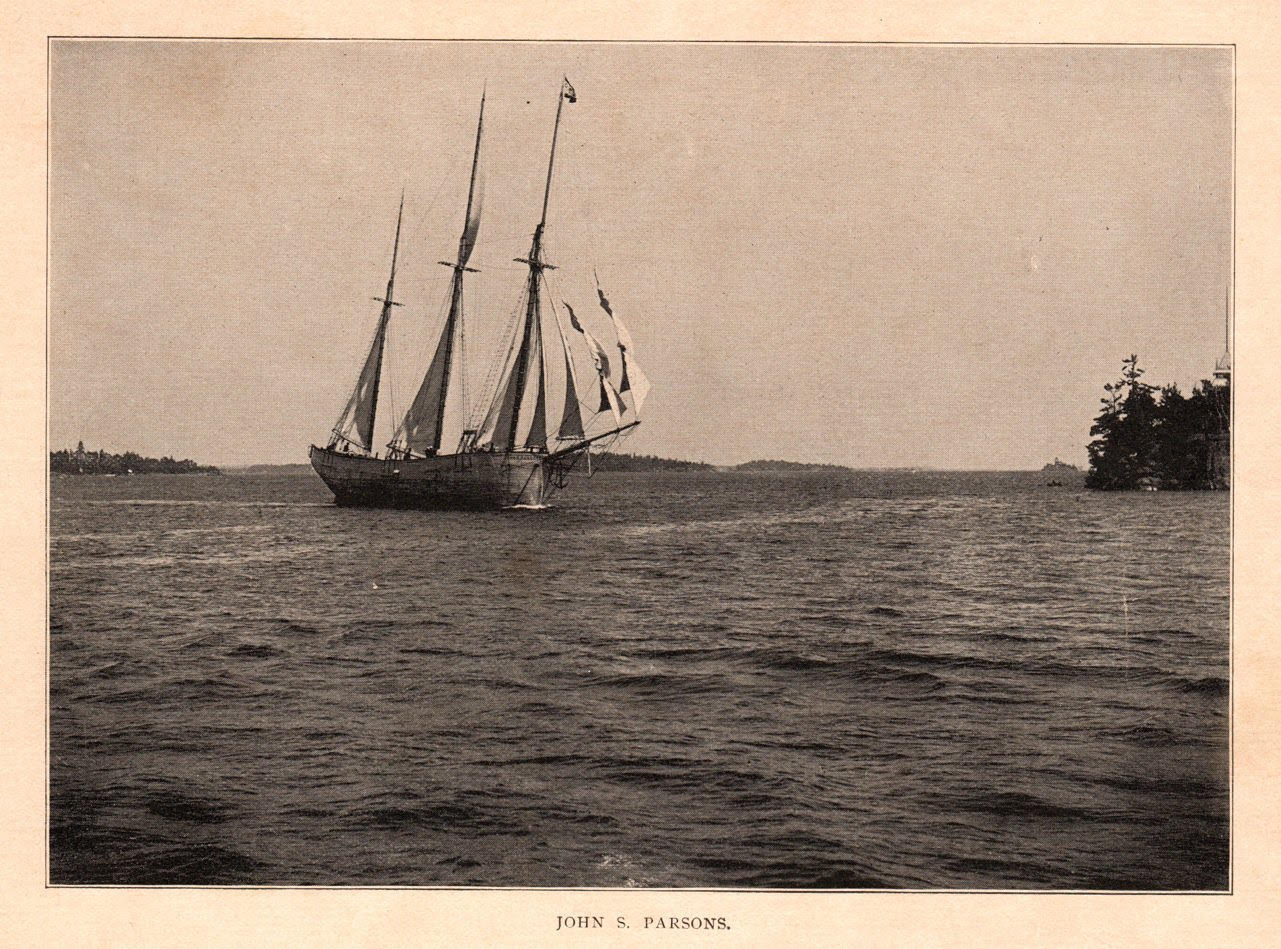In the early 1890s, when many of The Manlius School cadets (formerly St. John’s Military Academy) lived so far away, it was impractical for them to return home for their summer vacation, and so they remained on campus. Thinking of ways to keep them occupied, Colonel William Verbeck, president of the school, hit upon an idea while strolling the Oswego waterfront one day in 1892.

While there, he noticed a new three-masted schooner tied up, its snow-white paint glistening in the sunlight and its equally white sails furled along the booms. The schooner was the John S. Parsons, built in a shipyard at Chaumont, Jefferson County, by Captain Frank Phelps. It was Captain Phelps’ second schooner, his first having been the Emma.
During the course of his career, Phelps had frequently sailed in and out Oswego. He also did considerable business with John S. Parsons, who operated a ship chandlery on Water street. When Parsons learned Phelps was building a schooner, he offered to contribute all the necessary outfitting material free if Phelps would name the boat for him. This material included sails, jibs, cables, anchors, and all other accoutrements essential to the rigging of a schooner. It represented a large investment, particularly at a time when sailing vessels were considered obsolete.
Phelps jumped at the offer, and after the new vessel was formally launched in the spring, it was towed to Oswego, where it was fitted out. This job had just been completed when Verbeck saw the boat. Verbeck knew he’d found what he was looking for. He would charter the boat if he could, and with a group of cadets, tour Lake Ontario and the St. Lawrence River.
Verbeck boarded the schooner and asked for the captain. After a short conversation, during which Verbeck complimented Phelps on the vessel’s trim lines and neatness, he suggested what was in his mind. “But this is a freight boat,” Capt. Phelps informed him, “and I have no license to carry passengers.”
This might have discouraged a person with a less resourceful mind than that of Verbeck. But it didn’t daunt him. Explaining that he had 75 boys he wanted to take on a cruise, he asked:
“Is there any law against your signing these boys on as members of your crew?”
“Well, when you put it that way, I don’t think there is,” the skipper replied.
So it was arranged. The boys were signed on as sailors before the mast. Colonel Verbeck donated their “wages”, which, needless to say, left a sum for Capt. Phelps equivalent to what he would have received if he possessed the legal right to charter the schooner.
The boys were quartered in the hold of the ship, which started its maiden voyages with a crew of more than 80, counting the five or six men who made up a normal crew for a vessel like the John S. Parsons.

It passed the summer cruising up and down Lake Ontario and through the Thousand Islands region, as far down the St. Lawrence as Ogdensburg, and finally returned to Oswego, where the cadets disembarked and returned to school in time for the opening of the fall term.
Everyone was happy. The boys had a glorious vacation. Phelps had earned a neat profit and had done it without breaking any laws. And the cadets learned how to sail. A similar summer cruise occurred in 1893 and again in 1894, each lasting for several weeks. On July 30, 1894 a correspondent for the Utica Morning Herald and Gazette noted that the schooner John S. Parsons had passed down the River, under full spread of canvas, with the students of The Manlius School (formerly St. John’s Military Academy) on their annual vacation.
By Richard L. Palmer
Richard F. Palmer is a retired newspaper editor and reporter, and was well known for his weekly historical columns for the “Oswego Palladium-Times”, called "On the Waterfront." His first article for TI Life was written in January 2015 and since then, he has written a dozen-plus others. He is a voracious researcher, and TI Life readers benefit from his interesting findings. Click here to see some of Richard Palmer’s other TI Life Articles.
Posted in: Volume 16, Issue 9, September 2021, History, People, Places
Please click here if you are unable to post your comment.
